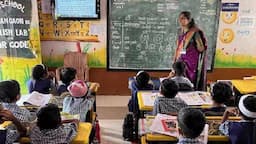Amidst the upheaval caused by the Ukraine-Russia conflict, Indian medical students studying in Ukraine found themselves thrust into the midst of a challenging predicament. With the escalation of the conflict into a full-blown war in February 2022, approximately 18,000 Indian medical students were compelled to return home from Ukraine, leaving their academic pursuits in limbo.
In response to this crisis, the National Medical Commission (NMC) made a one-time exception, permitting 4,000 final semester students to complete their internships in India. However, the vast majority of repatriated medical students, comprising around 70%, have opted to continue their studies in alternative destinations such as Serbia, Kyrgyzstan, Uzbekistan, and Georgia. This exodus has not only disrupted the educational trajectories of these students but has also fueled a growing trend of Indian students seeking medical education abroad.

Challenges Related to Medical Education in India
The landscape of medical education in India presents several formidable challenges that contribute to the allure of seeking education abroad:
- Limited Seats: The scarcity of medical college seats remains a persistent challenge, with the ratio of seats to aspirants standing at approximately 20:1.
- Rising Aspirants: The increasing number of students vying for limited seats has intensified competition, with only a fraction gaining admission to premier institutions.
- Uneven Distribution: Medical colleges in India are predominantly concentrated in urban areas, exacerbating the scarcity of healthcare professionals in rural regions.
- High Fees in Private Colleges: Private medical colleges often impose exorbitant fees, rendering education inaccessible to many aspiring doctors.
- Outdated Curriculum: Many medical institutions in India employ curricula that are out of sync with contemporary medical practices, creating a disparity between theoretical learning and practical skills.
- Infrastructure Deficiency: Inadequate infrastructure, including outdated facilities and equipment, undermines the quality of medical education in many institutions.
- Insufficient Emphasis on Practical Training: Theoretical instruction often takes precedence over practical training, leaving graduates ill-equipped for clinical practice.
- Neglect of Medical Research: The dearth of emphasis on medical research perpetuates a culture of neglect, hindering advancements in healthcare innovation.
Initiatives to Reform Medical Education

In response to these challenges, concerted efforts have been made to reform medical education in India:
- National Medical Commission: The establishment of the National Medical Commission (NMC) marked a significant overhaul of the regulatory framework, aimed at ensuring professionalism and excellence in medical education.
- Seat Expansion: Initiatives to augment the number of medical college seats, particularly through the conversion of district hospitals into medical colleges, aim to address the shortage of seats.
- Fee Regulation: Provisions within the NMC Act empower regulatory bodies to regulate fees in private medical colleges, fostering greater affordability and accessibility.
- Standardization of Admissions: The introduction of the National Eligibility cum Entrance Test (NEET) seeks to standardize admissions and streamline the counseling process.
- Quality Assessments: Regular assessments of medical colleges, coupled with the implementation of a common exit exam, ensure adherence to quality standards.
Recommendations for Enhancing Medical Education:
Moving forward, several recommendations could further bolster the quality and accessibility of medical education in India:
- Integration with District Hospitals: Linking private colleges with district hospitals could enhance healthcare access in underserved areas.
- Paramedic Training: Investing in the upskilling of paramedics and nurses can alleviate the shortage of healthcare professionals.
- Public-Private Partnerships: Encouraging public investment in medical colleges, alongside incentivizing private sector involvement, can expand educational infrastructure.
- Optimal Resource Utilization: Maximizing the utilization of existing infrastructure can optimize educational resources and expand capacity.
- Streamlined Recruitment: Implementing transparent recruitment processes can mitigate the presence of 'ghost faculty' and ensure faculty accountability.
As India navigates the complexities of medical education reform, addressing these challenges and embracing innovative solutions will be paramount in fostering a robust healthcare ecosystem and nurturing the next generation of healthcare professionals.










-1920x1080.jpg&w=256&q=75)





